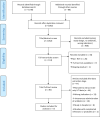Treatment of uncomplicated UTI in males: a systematic review of the literature
- PMID: 33234514
- PMCID: PMC8170603
- DOI: 10.3399/bjgpopen20X101140
Treatment of uncomplicated UTI in males: a systematic review of the literature
Abstract
Background: Urinary tract infections (UTIs) affect around 20% of the male population in their lifetime. The incidence of UTIs in men in the community is 0.9-2.4 cases per 1000 aged <55 years and 7.7 per 1000 aged ≥85 years.
Aim: To evaluate the outcomes of randomised controlled trials (RCTs) comparing the effectiveness of different antimicrobial treatments and durations for uncomplicated UTIs in adult males in outpatient settings.
Method: A systematic literature review of RCTs of adult male patients with an uncomplicated UTI treated with oral antimicrobials in any outpatient setting. The outcomes were symptom resolution within 2 weeks of starting treatment, duration until symptom resolution, clinical cure, bacteriological cure, and frequency of adverse events.
Results: From the 1052 abstracts screened, three provided sufficient information on outcomes. One study compared trimethoprim-sulfamethoxazole for 14 days (21 males) with 42 days (21 males). Fluoroquinolones were compared in the two other RCTs: lomefloxacin (10 males) with norfloxacin (11 males), and ciprofloxacin for 7 days (19 males) and 14 days (19 males). Combining the results from the three RCTs shows that for 75% males with a UTI (76/101) bacteriological cure was reported at the end of the study. Of the 59 patients receiving a fluoroquinolone, 57 (97%) reported bacteriological and clinical cure within 2 weeks after treatment.
Conclusion: The evidence available is insufficient to make any recommendations in relation to type and duration of antimicrobial treatment for male UTIs. Sufficiently powered RCTs are needed to identify best treatment type and duration for male UTIs in primary care.
Keywords: antibiotic treatment; male; primary health care; randomised clinical trial; review; urinary tract infections.
Copyright © 2020, The Authors.
Figures
References
Grants and funding
LinkOut - more resources
Full Text Sources

